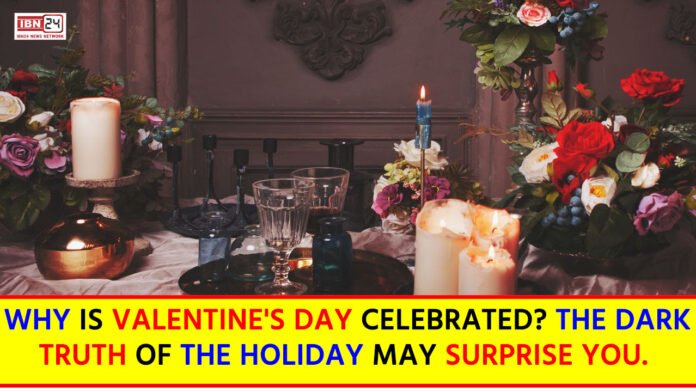Valentine’s Day celebration
Every year on Valentine’s Day, couples express their love for each other by exchanging cards, chocolate boxes and other gifts. The materialistic connotations of the gift-giving holiday have led to the joke that the holiday was created by greeting card and candy companies. But as it turns out, this is not the case.

Why is Valentine’s Day celebrated, really? The real reason is rooted in Christian and Roman traditions — and the mysterious Saint Valentine is at its center.
Who Was Saint Valentine?
The Catholic Church recognizes more than one Valentine’s Day, and the overlapping holidays are almost endless.
However, there are several theories. First, Valentine’s Day was celebrated in honor of a third-century Roman priest. According to legend, Saint Valentine defied Emperor Claudius II’s decree that men could be better soldiers if they were single. He married lovers in secret and was killed for treason upon discovery of this act.

Others believe that Valentine’s Day is a holiday named after St. Valentine of Terni. This Saint Valentine was a bishop in Rome in the third century and is famous for marrying two lovers of different religions against their parents’ wishes. The Anglo-Saxons believe that Saint Valentine of Derny shared flowers with visitors in his garden – when two fell in love, he was their wedding party. The couple became a shining example of what it means to be happily in love and inspired the saint to dedicate one day of the year to the public blessing of marriages.
Another theory is that Valentine’s Day was inspired by a man who was incarcerated and fell in love with his prison guard’s daughter. This man is said to have written a letter to his lover and signed it “From your Valentine” and wrote the first “Valentine”.
The first Valentine’s Day celebrations
Some believe that Valentine’s Day is celebrated on February 14 because Saint Valentine was killed or buried. Others suggest that the date is related to the ancient Roman festival of Lupercalia, a one-day celebration that began on February 13th and ended on February 15th.

Modern Valentine’s Day may be associated with paper hearts and candlelit dinners, but Lupercalia wasn’t so ideal. The festival promoted female fertility and honored Faunus, the Roman god of agriculture, and Romulus and Remus, the founders of Rome. It began with the sacrifice of a goat (symbolizing fertility) and a dog (symbolizing purification).
First, the priests kill the animal and cut the goatskin into strips. They were then dipped in sacrificial blood, and women willingly lined up to beat them to bloody pieces in the hope that the ritual would impregnate them for the coming year. Later, the women’s names are placed in a jar for the men to pick up, and this connection continues throughout the festival, or even longer depending on the competition.
Eventually (and fortunately) the holiday developed. First, Pope Glacius I combined Valentine’s Day with Lupercalia to end its association with paganism. Around the same time, the Normans (Viking settlers in France) began celebrating Gallatin Day, which was similar to Valentine’s Day.
We have Chaucer and Shakespeare to thank for the holiday’s turn for the sweeter. The writers romanticized the day in their works, which became popular across Europe. Paper cards became a popular new way to express affection in the mid-century — until Hallmark came to fruition in the early 1900s.
